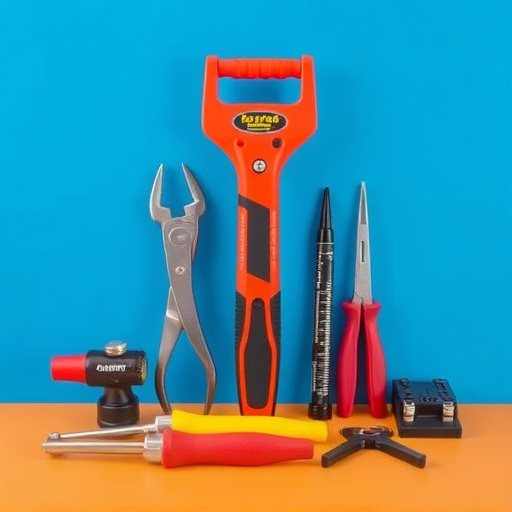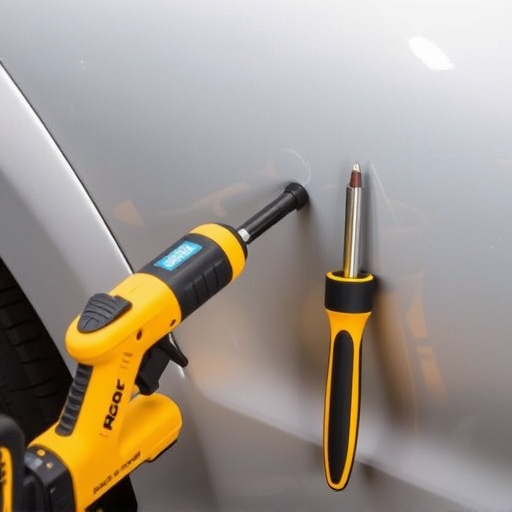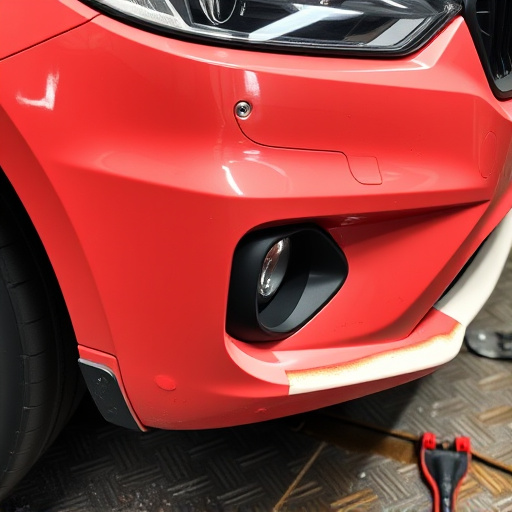Direct Repair Programs (DRPs) optimize vehicle accident repairs through comprehensive documentation, reducing errors and enhancing trust. Accurate records from initial assessments to final inspections ensure quality, consistency, and compliance with industry standards, improving communication, customer satisfaction, and shop reputation. Robust record-keeping practices streamline operations, track repairs efficiently, reduce administrative time, and facilitate quicker troubleshooting for future repairs, ultimately boosting service quality and client satisfaction.
In today’s automotive landscape, accurate documentation is paramount for the success of any direct repair program (DRP). DRPs serve as a vital link between manufacturers, insurance providers, and vehicle owners, ensuring efficient repairs and seamless claim processing. This article delves into the core role of DRPs and highlights why accurate documentation is the unseen foundation supporting their operations. By exploring robust records keeping, we uncover how it enhances efficiency and ensures high-quality service within DRP networks.
- Understanding Direct Repair Programs' Core Role
- Accurate Documentation: The Unseen Foundation
- Enhancing Efficiency Through Robust Records Keeping
Understanding Direct Repair Programs' Core Role

Direct Repair Programs (DRPs) play a pivotal role in streamlining the process of vehicle repairs, particularly in the aftermath of accidents. These programs are designed to facilitate efficient and effective collision repair services, ensuring that vehicles return to their pre-incident condition as quickly and cost-effectively as possible. At the heart of this process lies accurate documentation, which serves as the bedrock for successful DRPs.
Comprehensive documentation is essential for several reasons. It facilitates precise communication between insurance providers, body shops, and vehicle owners, minimizing missteps and misunderstandings. Moreover, detailed records of repair procedures, parts used, and labor costs enable transparent pricing and billing, fostering trust among all stakeholders. In the context of dent removal or car dent repair, accurate documentation ensures that every instance of damage is accounted for, enhancing the overall quality of collision repair services.
Accurate Documentation: The Unseen Foundation

Accurate documentation serves as the unseen foundation for any successful direct repair program. In the realm of automotive body work, meticulous records are more than just a good practice—they’re essential. Each car that enters a car body shop, whether it’s for minor dents or complex repairs, requires detailed documentation to ensure quality and consistency in the repair process. This involves everything from initial assessments and damage reports to progress notes and final inspection results.
Effective documentation enables seamless communication among repair teams, ensures compliance with industry standards and regulations, and provides a clear audit trail. For car repair services, this translates into better customer satisfaction, reduced disputes over repairs, and enhanced reputational protection. In essence, accurate documentation is the silent hero of any car body shop, fostering efficiency, transparency, and reliability in the overall repair experience.
Enhancing Efficiency Through Robust Records Keeping

Accurate documentation is a cornerstone of any successful direct repair program. By implementing robust records keeping practices, auto body shops and collision centers can significantly enhance their operational efficiency. Well-organized records streamline processes, ensuring that every step of a car restoration or vehicle collision repair is meticulously tracked and documented. This not only improves accuracy but also reduces the time spent on administrative tasks, allowing technicians to focus more on the actual repair work.
Effective documentation enables shops to maintain detailed histories of each repair project, including parts used, labor hours, and customer preferences. Such information is invaluable for future reference, enabling quicker troubleshooting and more precise estimations during subsequent car body repairs or vehicle collision repairs. This level of detail contributes to a higher quality of service, fostering client satisfaction and building a solid reputation in the industry.
Accurate documentation in direct repair programs is not just a best practice—it’s an indispensable tool for ensuring quality, efficiency, and customer satisfaction. By meticulously recording every step of the repair process, shops participating in direct repair programs can streamline operations, reduce errors, and provide consistent, reliable service. This, in turn, fosters trust with manufacturers and ultimately benefits both the repair shop and its customers.














